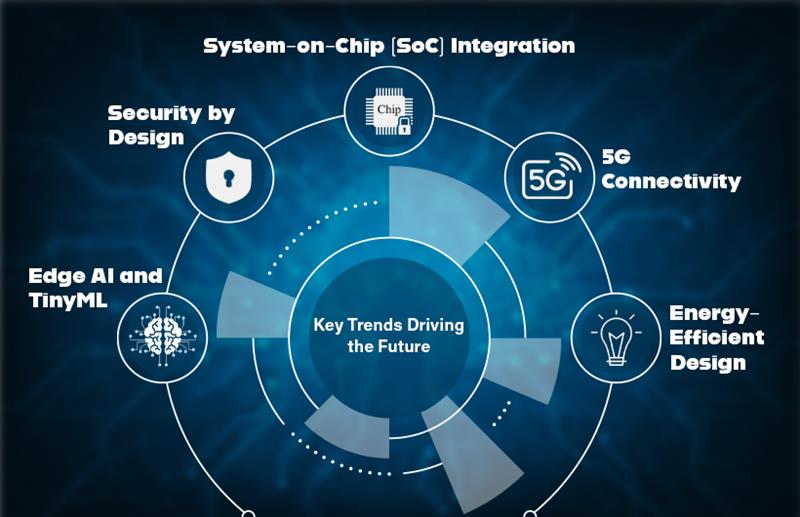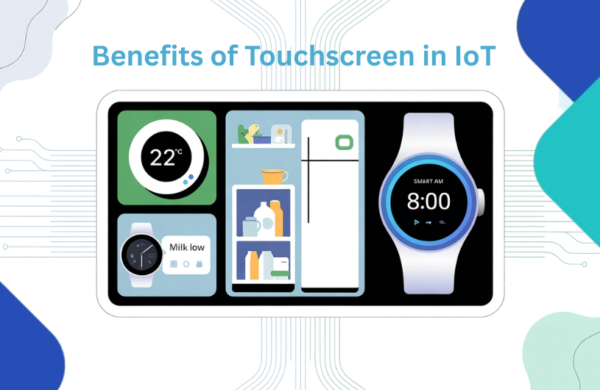In the rapidly evolving world of technology, embedded hardware has emerged as a crucial component driving innovation in the realms of IoT (Internet of Things) and AI (Artificial Intelligence). As digital transformation spreads across industries, the synergy between embedded systems, smart devices, and intelligent algorithms is shaping the future of how we interact with machines, data, and environments.
From smart homes and industrial automation to autonomous vehicles and wearable health monitors, embedded hardware powered by IoT and AI is not just a trend; it’s the foundation of next-generation solutions. At Monarch Innovation, we are at the forefront of this technological evolution, delivering cutting-edge engineering services and embedded system design tailored for the future.
Understanding Embedded Hardware in the Context of IoT and AI
Embedded hardware refers to specialised computing systems designed to perform dedicated tasks within larger systems. These are not your general-purpose computers but rather compact, power-efficient, and task-specific devices that are “embedded” within a product. Think of microcontrollers, system-on-chip (SoCs), sensors, and actuators; these form the backbone of embedded hardware systems.
Role of IoT
IoT is essentially a network of interconnected devices that collect and exchange data. Embedded hardware plays a central role in enabling these devices to sense, process, and communicate information. Whether it’s a smart thermostat adjusting room temperature or an industrial robot optimising production lines, embedded systems are the silent workers powering these innovations.
Role of AI
Artificial Intelligence adds a layer of intelligence to the Iot ecosystem. It enables machines to learn from data, make predictions, and automate decisions. Embedded hardware with built-in AI capabilities allows for real-time analytics, anomaly detection, predictive maintenance, and much more, without relying on cloud-based processing.
The Convergence of IoT, AI, and Embedded Hardware
The future lies in intelligent edge devices—embedded systems equipped with AI that process data locally, also known as edge computing. This combination enhances speed, reduces latency, improves data privacy, and lowers bandwidth costs.
For example, a smart surveillance camera equipped with AI can analyse video feeds in real-time to detect suspicious activity without sending the footage to a centralised server. Similarly, smart healthcare devices can continuously monitor patient vitals and alert doctors if any abnormality is detected.
This fusion is paving the way for a more responsive, autonomous, and intelligent world.
Key Trends Driving the Future

1. Edge AI and TinyML
Edge AI refers to the deployment of AI algorithms on embedded devices at the edge of the network. TinyML (Tiny Machine Learning) brings machine learning capabilities to ultra-low-power devices such as microcontrollers. This trend is revolutionising use cases where power, space, and connectivity are limited, such as remote sensors in agriculture or wearable fitness trackers.
2. Security by Design
As embedded systems become more interconnected, they are also more vulnerable to cyber threats. The future will see a stronger emphasis on “security by design”—embedding robust security features at the hardware level, such as secure boot, encryption engines, and trusted execution environments.
3. System-on-Chip (SoC) Integration
Modern embedded hardware is increasingly relying on SoCs that integrate multiple functions into a single chip—processing, memory, communication, and AI acceleration. These chips offer compact design, reduced power consumption, and high efficiency, making them ideal for applications in smart homes, healthcare, and the automotive sectors.
4. 5G Connectivity
With the rollout of 5G, embedded IoT devices will benefit from faster data transmission, ultra-low latency, and higher bandwidth. This enables real-time control of critical applications such as remote surgeries, autonomous vehicles, and industrial automation.
5. Energy-Efficient Design
Power consumption remains a major challenge in embedded systems, especially those deployed in remote or portable settings. Innovations in battery technology, energy harvesting, and low-power chip design are crucial to enabling longer device lifespans and sustainable deployments.
Real-World Applications Transforming Industries

1. Healthcare
Embedded hardware with AI and IoT is transforming healthcare through devices like smart insulin pumps, ECG monitors, and wearable fitness trackers. These devices collect real-time health data, analyse trends, and help medical professionals deliver personalised care.
2. Automotive
Autonomous driving, advanced driver-assistance systems (ADAS), and in-car infotainment systems are all powered by complex embedded hardware with real-time AI processing capabilities. These innovations enhance safety, navigation, and user experience.
3. Smart Cities
Smart streetlights, waste management systems, traffic control, and environmental monitoring rely on embedded IoT systems to function efficiently. AI algorithms further enhance these systems by optimising resource usage and improving city services.
4. Manufacturing
In Industry 4.0, embedded hardware is used for predictive maintenance, quality inspection, and robotic automation. IoT sensors collect machine data while AI models predict failures before they happen, reducing downtime and operational costs.
5. Agriculture
Smart farming tools use embedded systems for Agriculture, like soil monitoring, irrigation control, and pest detection. AI models optimize crop yields by analysing data collected from various sensors and drones.
Challenges Ahead
While the future is promising, the integration of AI and IoT into embedded hardware presents several challenges:
- Complexity in design: Balancing performance, power, and cost in a small footprint.
- Interoperability: Ensuring seamless communication among a variety of devices and platforms.
- Scalability: Managing millions of connected devices and data streams.
- Data security and privacy: Protecting sensitive information in an increasingly connected world.
At Monarch Innovation, we address these challenges with our deep expertise in embedded hardware design, IoT systems, and AI integration. We work closely with clients to deliver customized, future-ready solutions tailored to their specific industry needs.
Monarch Innovation: Driving the Future of Embedded Technology
Monarch Innovation remains committed to pushing the boundaries of what’s possible as the demand for intelligent, connected systems continues to grow. Our multidisciplinary team of engineers, designers, and technology experts is adept at crafting embedded systems that are efficient, secure, but also intelligent, and adaptable.
From concept to prototype and production, we offer end-to-end embedded solutions that align with your business goals. Whether you’re building a smart consumer device, an industrial automation platform, or a cutting-edge healthcare product, we bring innovation to every layer of the embedded ecosystem.
Conclusion
The future of embedded hardware lies in its seamless integration with IoT and AI, creating systems that are smarter, faster, and more efficient. As edge computing, AI models, and connectivity technologies evolve, embedded systems will play an even more central role in shaping tomorrow’s intelligent world.
At Monarch Innovation, we’re excited to be part of this journey. Let us help you innovate, implement, and lead in the age of smart systems.






